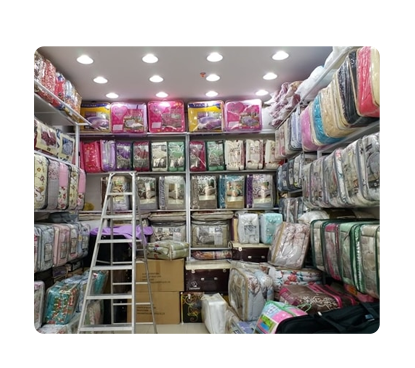It is a modern furniture exhibition organized using the latest display methods, including the latest furniture and accessories. The exhibition displays bedrooms, living rooms, tables, and accessories.

It is a modern furniture exhibition organized according to the latest display methods, including the latest models of furniture and accessories. The exhibition displays (bedrooms – living rooms – tables – and accessories). The exhibition aims to satisfy customers by providing a unique product in terms of design, materials, quality and prices. The exhibition displays the latest furniture designs and models (Turkish, Italian, German, French models, and also American-style models) at competitive prices with high-quality products and materials. The exhibition uses accessories such as zippers, drawer pulls, doors, and hinges of the highest and best types and brands available in the market, using the best technology and the highest quality levels. This enables it to compete with local competitors’ products and meet the increasing demand and consumption of furniture, as the exhibition’s products are available in every modern home.



Operating the showroom with the best capabilities and providing the finest types of furniture.
Creating new investment opportunities with good returns.
Achieving a good return for the project owner.
Employing the workforce and improving their economic and social standing.
Achieving good returns, cash flows, and added economic value.
Optimizing the project’s resources and assets.
Achieving a high level of quality.
Maintaining competitive prices that enable the project to achieve its target share.
Executive summary
Study project services/products
Market Size Analysis
Risk Assessment
Technical study
Financial study
Organizational and administrative study

Service sector in GCC countries
According to the macroeconomic theory of sectors, the economy is divided into three main and large sectors: the first; – is the sector that is based on collecting raw materials and includes mining companies, timber companies, oil exploration companies, in addition to agricultural and fishing industries. The second sector; is the sector that depends on goods and their sale, such as: (car manufacturing, furniture, clothing trade… etc.). As for the third sector, known as the “services” sector; it is the sector responsible for providing and producing services, essentially relying on intangible things, such as: entertainment, health care, transportation, hospitality, restaurants, etc. This theory believes that the more advanced countries are, the more their economies are based on the third sector, unlike primitive countries, which rely mostly on the first sector (the United States of America, for example, the service sector constitutes 85% of its economy).
Kingdom of Saudi Arabia:
The State of Qatar:
Kuwait:
United Arab Emirates:
Sultanate of Oman:
Global Service Sector
The service sector is the major contributor to the world’s gross product; It alone accounts for more than three fifths of this output. The sector does not rely on the production of tangible goods such as automobile and furniture, but rather on the provision of intangible services such as banking, medical care, transportation, hospitality, leisure, etc. The value of the sector market was estimated in 2020 at USD 10,814.49 billion and rose to USD 11,780.11 billion in 2021. The market achieved a CAGR of 8.9%. After recovering from the effects of the coronavirus pandemic, global market experts expect the sector’s market to reach US $ 15683.84 billion by 2025, bringing the market to a CAGR of 7% in the coming years.
